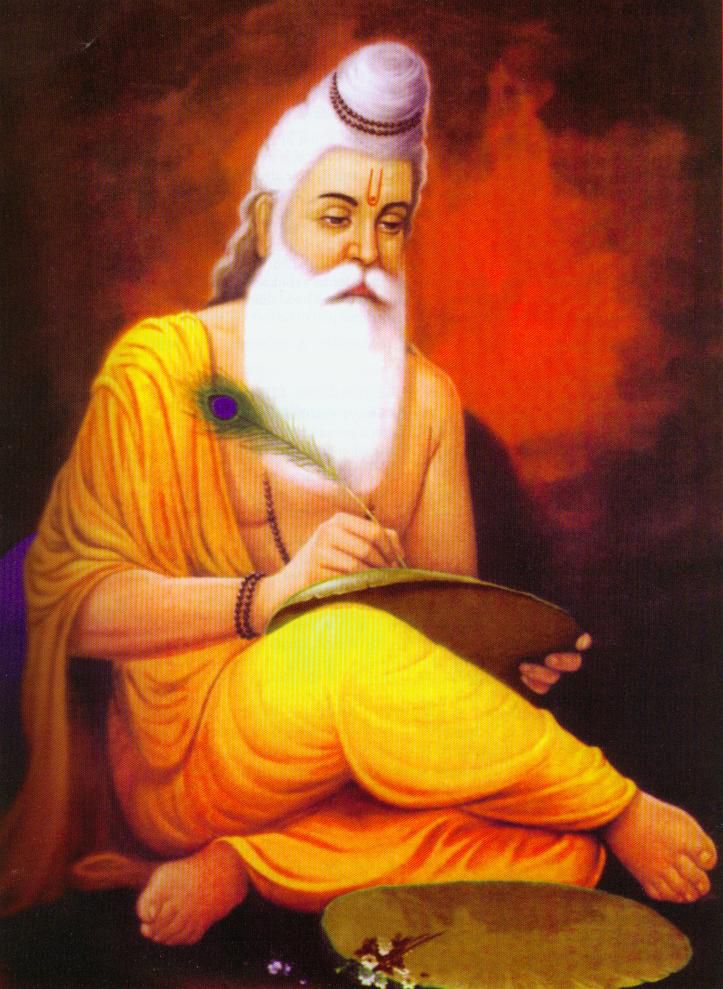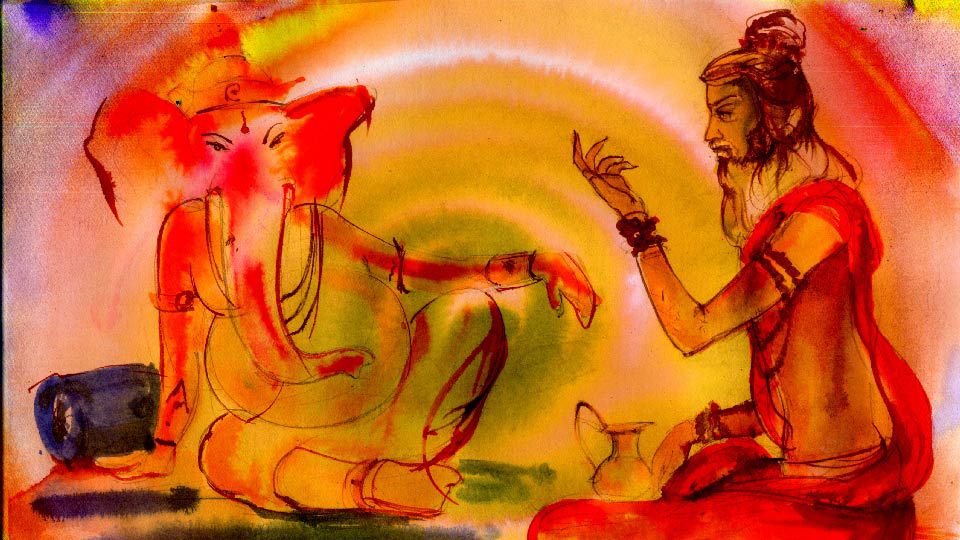No products in the cart.
In ancient days, our forefathers, the Rishis of Aryavartha, went to the forest to do Tapasya during the four months following Vyasa Purnima—a particular and important day in the Hindu calendar. On this memorable day, Maharishi Veda Vyasa, an incarnation of the Lord Himself, began to write his Brahma Sutras. Our ancient Rishis did this Tapasya in caves and forests. But times have changed and such facilities are not common nowadays although Grihasthas and Rajas are not wanting who are able and willing to place at the disposal of the members of the fourth Ashrama such help and facilities as they can afford. The forests and caves have given place to the rooms of Sadhus in their own Gurudwaras and Mutts. One has of necessity to suit himself to time and place; and change of place and situation should not be allowed to make such a difference in our mental attitudes. Chaturmas begins from the Vyasa Purnima Day when, according to our Shastra, we are expected to worship Vyasa and the Brahmavidya Gurus and begin the study of the Brahma Sutras and other ancient books on ‘wisdom’.
Our mythology speaks of many Vyasas; and it is said that there had been twenty-eight Vyasas before the present Vyasa—Krishna Dvaipayana—took his birth at the end of Dvapara Yuga. Krishna Dvaipayana was born of Parasara Rishi through the Matsya Kanya—Satyavathi Devi—under some peculiar and wonderful circumstances. Parasara was a great Jnani and one of the supreme authorities on astrology and his book Parasara Hora is still a textbook on astrology. He has also written a Smriti known as Parasara Smriti which is held in such high esteem that it is quoted by our present-day writers on sociology and ethics. Parasara came to know that a child, conceived at a particular Ghatika or moment of time, would be born as the greatest man of the age, nay, as an Amsa of Lord Vishnu Himself. On that day, Parasara was travelling in a boat and he spoke to the boatman about the nearing of that auspicious time. The boatman had a daughter who was of age and awaiting marriage. He was impressed with the sanctity and greatness of the Rishi and offered his daughter in marriage to Parasara. Our Vyasa was born of this union and his birth is said to be due to the blessing of Lord Siva Himself who blessed the union of a sage with a Jnani of the highest order, although of a low caste.
At a very tender age Vyasa gave out to his parents the secret of his life that he should go to the forest and do Akhanda Tapas. His mother at first did not agree, but later gave permission on one important condition that he should appear before her whenever she wished for his presence. This it shows how far-sighted the parents and the son were. Puranas say that Vyasa took initiation at the hands of his twenty-first Guru, sage Vasudeva. He studied the Shasta’s under sages Sanaka and Sanandana and others. He arranged the Vedas for the good of mankind and wrote the Brahma Sutras for the quick and easy understanding of the Srutis; he also wrote the Mahabharata to enable women, Sudras and other people of lesser intellect to understand the highest knowledge in the easiest way. Vyasa wrote the eighteen Puranas and established the system of teaching them through Upakhyanas or discourses. In this way, he established the three paths, Karma, Upasana and Jnana. To him is also attributed the fact that he continued the line of his mother and that Dhritarashtra, Pandu and Vidura were his progeny. Vyasa’s last work was the Bhagavata which he undertook at the instigation of Devarshi Narada who once came to him and advised him to write it as, without it, his goal in life would not be reached.
 Vyasa is considered by all Hindus as a Chiranjivi, one who is still living and roaming throughout the world for the well-being of his devotees. It is said that he appears to the true and the faithful and that Jagadguru Sankaracharya had his Darshan in the house of sage Mandana Misra and that he appeared too many others as well. Thus, in short, Vyasa lives for the welfare of the world. Let us pray for his blessings on us all and on the whole world.
Vyasa is considered by all Hindus as a Chiranjivi, one who is still living and roaming throughout the world for the well-being of his devotees. It is said that he appears to the true and the faithful and that Jagadguru Sankaracharya had his Darshan in the house of sage Mandana Misra and that he appeared too many others as well. Thus, in short, Vyasa lives for the welfare of the world. Let us pray for his blessings on us all and on the whole world.
Everybody knows that there are six important systems of thought developed by our ancients known as the Shad Darshanas or the six orthodox schools of philosophy, Sankhya, Yoga, Nyaya, Vaiseshika, Purva Mimamsa and Uttara Mimamsa or Vedanta. Each system has a different shade of opinion. Later, these thoughts became unwieldy, and to regulate them, the Sutras came into existence. Treatises were written in short aphorisms, called “Sutras” in Sanskrit, meaning clues for memory or aids to long discussions on every topic. In the Padma Purana, the definition of a Sutra is given. It says that a Sutra should be concise and unambiguous; but the brevity was carried to such an extent that the Sutra has become unintelligible and particularly so in the Brahma Sutras. Today we find the same Sutra being interpreted in a dozen ways. The Brahma Sutras written by Vyasa or Badarayana—for that was the name which he possessed in addition—are also known as Vedanta Sutras as they deal with Vedanta only. They are divided into four chapters, each chapter being subdivided again into four sections. It is interesting to note that they begin and end with Sutras which read together mean “the inquiry into the real nature of Brahman has no return”, meaning that “going by that way one reaches Immortality and no more returns to the world”. About the authorship of these Sutras, tradition attributes it to Vyasa. Sankaracharya, in his Bhashya, refers to Vyasa as the author of the Gita and the Mahabharata, and to Badarayana as the author of the Brahma Sutras. His followers—Vachaspathi, Anandagiri and others—identify the two as one and the same person, while Ramanuja and others attribute the authorship of all three to Vyasa himself. The oldest commentary on the Brahma Sutras is by Sankaracharya; he was later followed by Ramanuja, Vallabha, Nimbarka, Madhva and others who established their own schools of thought. All the five Acharyas mostly agree on two points,
- That Brahman is the cause of this world and
- That knowledge of Brahman leads to final emancipation.
But they differ amongst themselves on the nature of this Brahman, the relation between the individual soul and the Supreme Soul, and the condition of the soul in the state of release. According to some, Bhakti and not Jnana, as interpreted by Sankara, is the chief means of attaining liberation.
Vyasa’s life is a unique example of one born for the dissemination of spiritual knowledge. His writings inspire us and the whole world even to this day. May we all live in the spirit of his writings!
Major Work of Veda Vyasa
Mahabharata: There is a cameo of Ved Vyasa himself in Mahabharata. He is considered as a part-incarnation of Lord Vishnu. It is said that he came to the earth in Dwaparyuga to put all the Vedic knowledge in this universe in the form of written words and make it available to everyone. Before Ved Vyasa the Vedic knowledge only existed in the form of spoken words. He was the grandfather to Pandavas and Kauravas. He is called Ved Vyasa because he had split the original version of Vedas into four parts; Ved Vyasa literally means ‘the splitter of Vedas’. It was because Ved Vyasa had split the Vedas that it became easy for people to understand it. This is how the divine knowledge was made available to everyone. It is still not clearly known whether Ved Vyasa had split the Vedas all by himself or if he did with the help of a group of scholars.
In Mahabharata, Vyasa’s mother marries the king of Hasthinapur and gives birth to two sons. Both the sons die and their wives are left with no children. She asks him to impregnate both the wives. Vyasa agrees to impregnate Amba and Ambika. He tells these girls to come in close proximity to him but alone. It was Ambika’s turn first to go close to him and out to shyness she closes her eyes. Vyasa declares that the baby would be born blind––this child was called Dhritarashtra. Then it was Amba’s turn. Although she was instructed by Ambalika to relax and calm herself down. But she was very nervous and her face becomes pale out of fear. Vyasa declares that the baby born out of this will be severely anemic and will certainly not be capable of running a kingdom––this was Pandu. This leads to the third attempt to make a healthy child but Amba and Ambika were so scared now that they sent a servant girl instead. This maid was confident and she gets impregnated with a healthy child––this was Vidura. He also had another son called Suka from sage Jabali’s daughter called Pinjala. It is said that Ved Vyasa asked Lord Ganesha himself to help him in compilation of Mahabharata. But Ganesha had put one condition on him; he said that he will write Mahabharata for him if only he will narrate it to him without a single pause. To supersede this condition, Vyasa put another condition on him asking him to understand the verses even before he has recited them. This is how Mahabharata was written, Ved Vyasa narrated all the Upanishads and 18 Puranas continuously to Lord Ganesha.
Buddhism: There is also mention of Ved Vyasa in Buddhism. In the two of their Jataka tales called Kanha-dipayana and Ghata. He appeared as a Bodhisattva in Kanha-dipayana, which has no connection with his Hindu Vedic works and in Ghata Jakata his role has a close relation to Mahabharata. In Ghata, the Vrishnis plays a joke on Ved Vyasa to put his clairvoyance powers to test. They dress up a boy as a woman by tying a pillow to his belly. Then they took him to Vyasa and asked him if he could tell them when the baby is due. He tells then that the person in front of him will give birth to a knot of acaria wood and will destroy Vasudevas’s race. They kill him in the end but his divination came true.






